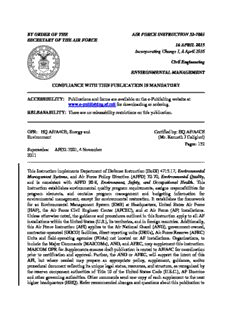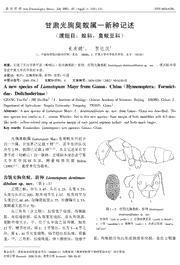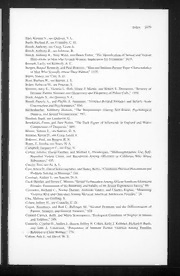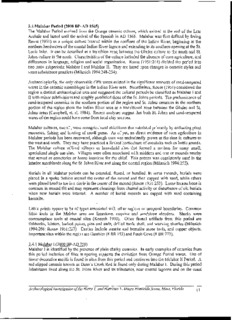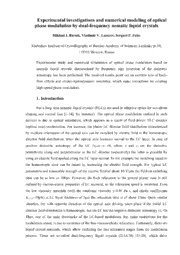
DTIC ADA446489: Experimental Investigations and Numerical Modeling of Optical Phase Modulation by Dual-Frequency Nematic Liquid Crystals PDF
Preview DTIC ADA446489: Experimental Investigations and Numerical Modeling of Optical Phase Modulation by Dual-Frequency Nematic Liquid Crystals
REPORT DOCUMENTATION PAGE Form Approved OMB No. 0704-0188 Public reporting burden for this collection of information is estimated to average 1 hour per response, including the time for reviewing instructions, searching existing data sources, gathering and maintaining the data needed, and completing and reviewing the collection of information. Send comments regarding this burden estimate or any other aspect of this collection of information, including suggestions for reducing the burden, to Department of Defense, Washington Headquarters Services, Directorate for Information Operations and Reports (0704-0188), 1215 Jefferson Davis Highway, Suite 1204, Arlington, VA 22202-4302. Respondents should be aware that notwithstanding any other provision of law, no person shall be subject to any penalty for failing to comply with a collection of information if it does not display a currently valid OMB control number. PLEASE DO NOT RETURN YOUR FORM TO THE ABOVE ADDRESS. 1. REPORT DATE (DD-MM-YYYY) 2. REPORT TYPE 3. DATES COVERED (From – To) 17-01-2006 Final Report 1 January 2004 - 15 October 05 4. TITLE AND SUBTITLE 5a. CONTRACT NUMBER FA8655-03-D-0001, Delivery Order 0015 Experimental Investigations And Numerical Modeling Of Optical Phase Modulation By Dual-Frequency Nematic Liquid Crystals 5b. GRANT NUMBER 5c. PROGRAM ELEMENT NUMBER 6. AUTHOR(S) 5d. PROJECT NUMBER Dr. Mikhail Ivanovich Barnik 5d. TASK NUMBER 5e. WORK UNIT NUMBER 7. PERFORMING ORGANIZATION NAME(S) AND ADDRESS(ES) 8. PERFORMING ORGANIZATION Shubnikov Institute of Crystallography REPORT NUMBER Leninsky prosp. 59 Moscow 117333 N/A Russia 9. SPONSORING/MONITORING AGENCY NAME(S) AND ADDRESS(ES) 10. SPONSOR/MONITOR’S ACRONYM(S) EOARD PSC 821 BOX 14 FPO 09421-0014 11. SPONSOR/MONITOR’S REPORT NUMBER(S) EOARD Task 03-9008 12. DISTRIBUTION/AVAILABILITY STATEMENT Approved for public release; distribution is unlimited. 13. SUPPLEMENTARY NOTES 14. ABSTRACT This report results from a contract tasking Shubnikov Institute of Crystallography as follows: The contractor will investigate electro-optical effects and physical properties of liquid crystal materials (LCM) to improve spatial phase modulation for steering light. The primary goal is to develop liquid crystal (LC) based techniques for fast phase modulation. As noted in the technical proposal, the ultimate objective is to achieve the following performance characteristics of optical phase modulators: 1) 100% phase modulation not less than 2pi radian in the visible and near IR spectral band; 2) the time of 2pi-phase retardation switching is less than 1-2 ms (at the switching repetition rate higher than 250 Hz) 3) LC-material transparency in the spectral band of 800-1550 nm; 4) driving voltage less than ±50 V; 5) wide operating temperature range (including the range below room temperatures). 15. SUBJECT TERMS EOARD, Liquid Crystals, Spatial light modulators 16. SECURITY CLASSIFICATION OF: 17. LIMITATION OF 18, NUMBER 19a. NAME OF RESPONSIBLE PERSON ABSTRACT OF PAGES PAUL LOSIEWICZ, Ph. D. a. REPORT b. ABSTRACT c. THIS PAGE UL UNCLAS UNCLAS UNCLAS 22 19b. TELEPHONE NUMBER (Include area code) +44 20 7514 4474 Standard Form 298 (Rev. 8/98) Prescribed by ANSI Std. Z39-18 Experimental investigations and numerical modeling of optical phase modulation by dual-frequency nematic liquid crystals Mikhail I. Barnik, Vladimir V. Lazarev, Serguei P. Palto Shubnikov Institute of Crystallography of Russian Academy of Sciences, Leninsky pr.59, 119333 Moscow, Russia Experimental study and numerical simulations of optical phase modulators based on nematic liquid crystals characterized by frequency sign inversion of the dielectric anisotropy has been performed. The received results point out an extreme role of back- flow effects and electro-hydrodynamic instability, which make restrictions for creating high-speed phase modulators. 1. Introduction For a long time nematic liquid crystals (NLCs) are used in adaptive optics for wavefront shaping and control (see [1-14], for instance). The optical phase modulation realized in such devices is due to optical retardation, which appears as a result of field-driven NLC director (optical axis) reorientation. For instance, the planar LC director field distribution characterized by in-plane orientation of the optical axis can be switched by electric field to the homeotropic director field distribution, when the optical axis becomes normal to the LC layer. In case of positive dielectric anisotropy of the LC (ε=ε−ε >0, where ε and ε are the dielectric a || ⊥ || ⊥ permittivity along and perpendicular to the LC director respectively) the latter is possible by using an electric field applied along the LC layer normal. In this example the switching speed to the homeotropic state can be raised by increasing the electric field strength. For typical LC parameters and reasonable strength of the electric field of about 10 V/µm the field-on switching time can be as low as 100µs. However, the back relaxation to the ground planar state is still defined by viscous-elastic properties of LC material, so the relaxation speed is restricted. Even for low viscosity materials (with the rotational viscosity γ~0.05 Pa s, and elastic coefficients K ~10pN) at LC layer thickness of 5µm the relaxation time is of about 15ms. Quite similar 1,2,3 situation, but with opposite direction of the optical axis driving, takes place if the initial LC director field distribution is homeotropic, but the LC has the negative dielectric anisotropy (ε<0). a Thus, one of the main drawbacks of the LC-based modulators that make restrictions for the modulation speed, is due to existence of the free viscous-elastic relaxation. Fortunately, there are liquid crystal materials, which allow excluding the free relaxation stages from the modulation process. These are so-called dual-frequency liquid crystals (2f-LCM) [15-20], which show inversion of the dielectric anisotropy sign at some frequency, which is typically located in sound- frequency band. Using the dual-frequency driving one can realize field-driven reorientation of the LC optical axis to both homeotropic and planar states. There are many examples of 2f-LCMs applications for the optical phase modulation [21-26]. Due to possibility of excluding the free relaxation stages from the modulation process it is believed that using the 2f-LCMs will allow creating very fast phase modulators [27,28]. Recently [29] we have studied the dynamical properties of 2f-LCMs phase modulators. The stable switching to any desired state characterized by phase retardation within the range from 0 to 2π has been achieved for times less than 1 ms. This switching was realized for layers of thicknesses larger than 7 µm. For example, to obtain such phase modulation parameters for a layer of the 2f-LCM as thick as 8 µm, it is sufficient to use the low-frequency(2 kHz) driving voltage of 50 V and high-frequency voltage (35 kHz) of 30 V. We have also assumed that high- frequency driving induces extra back-flow coupling, which then provokes experimentally observed hydrodynamic instabilities restricting high-speed performance of the modulators. In this paper we clarify reasons for restrictions of high-speed modulation in more details. In addition to the experimental study we show the results of the numerical simulations of the 2f- LCMs switching. These numerical simulations agree with the experimental observations and give explicit confirmation for the principal role of back-flow hydrodynamic coupling, which makes restriction in creating high-speed optical phase modulators. The simulation results point out the principal LC parameters to be improved in order to get highest performance of the 2f- LCM phase modulators. 2. Experiment and Results Experimental data were received on a specially developed 2f-LCM mixture called AP- 99-1. This mixture is characterized by following physical parameters at room temperature (T = 21°C): ε (1 kHz) = 2.4, ε (40 kHz) = -2.6, f = 9 kHz, optical anisotropy ∆n = n - n = 0.25 (n a a i || ⊥ || = n and n =n are refractive indices along and perpendicular to the LC director, respectively), e ⊥ o splay and bend elastic constant are equal K = 9.7 pN and K = 16.5 pN, respectively. The 1 3 temperatures of phase transitions are found to be as follows: from nematic to smectic T =<-7°C NS and from isotropic to nematic T =74°C at cooling and from nematic to isotropic T =78°C at I-N N-I heating. The electro-optical investigations were made on cells with planarly aligned LC layers. The LC alignment was due to the boundary conditions providing the director pretilt angles of the same sign at opposite surfaces. These boundary conditions were controlled by rubbing of the polyimide alignment layers in opposite ("antiparallel") directions that gives a pretilt angle of |Θ| ~3o-4o [30]. The cell of such a director arrangement is referred below as a cell of homogeneous alignment, or "0-aligned" cell. For the 0-aligned cells the director field is uniform accrosst the thickness of LC layer. The cells were placed between crossed polarizers. The He-Ne laser was used as a light source. The dual-frequency modulated pulse packets consisting of a sequence of low frequency (1 kHz) square-waveform pulses and high frequency (35 kHz) sinusoidal waves were used for driving. The details of the method for measuring the optical phase modulation properties were described in [29]. Two geometries distinguished by LC director orientation (i.e. rubbing direction R of alignment layers) with respect to the direction P defining the axis of the input polarizer were used in our experiments: i) “RP ”, when the rubbing direction turned at an angle of 45o; 45 (ii)“RP ”, when the rubbing direction is at an angle of 00. In all the measurements the input and 0 output polarizers were crossed. For RP geometry, in case of non-twisted LC director field 45 distribution, the intensity I of the outgoing light and the phase retardation ∆Φ are related as: ⎛∆Φ⎞ I = I sin2⎜ ⎟, (1) 0 ⎝ 2 ⎠ where I is approximately (neglecting reflections and non-ideality of the polarizers) half of the 0 intensity of the incoming nonpolarized light and 2π ∆Φ = d∆n, (2) λ where λ is wavelength and d is LC layer thickness. Note right here that for RP geometry the 0 electro-optical response can be non-zero only if a twist deformation appears in the director field distribution. Fig. 1 demonstrates the electro-optical response for two different cells with LC layer thickness of 7.6 µm and 10 µm. For these thicknesses values the field-off states correspond to phase retardations of about 6π and 8π, respectively. Maximum values of transmission (T=1) are achieved at odd multiple of π phase retardations. The driving waveform is shown at the bottom in the Fig.1. Both low and high frequency driving waveforms are of 1 ms in duration. 0,5 1 2 RP 0 3 0,0 1,0 1 RP a) 45 2 3 0,5 4 0,0 u. . 0,5 a 1 RP , 2 0 T 3 0,0 b) 1,0 1 RP45 2 3 0,5 0,0 U 0 1 2 3 4 T i m e, ms Fig. 1. Electro-optical response measured for the 0-aligned AP-99-1 layers in RP and RP 45 0 geometries at U = 50V and T = 22°C): a) d = 7.6 µm, curve 1-4 are for U =22, 30, 40 and 0 LF HF V, respectively; b) d =10 µm, curve 1-3 are for U = 30, 38 and 51 V, respectively. The lower HF trace represents the applied voltage waveform. As it is seen in Fig. 1, the low frequency driving waveform of about 50 V in amplitude is sufficient to achieve almost homeotropic director field distribution that provides the phase retardation ∆Φ to be very close to zero. In the dynamic mode the phase retardation of 2π not always can be achieved, despite the two layers are capable to provide a phase retardation of 6π and 8π respectively in the quasi-static regime. The latter is proved by absence of 100% intensity modulation in the electrooptical response. The amplitudes of high frequency voltage U are 30 HF and 38 V for LC layer thickness of 7.6 µm and 10 µm respectively. At first glance with increasing the high frequency amplitude U at a fixed low frequency voltage U the LC HF LF director field distribution after fixed time interval should become closer to the planar state, and the phase retardation have to be increased. However, one can see that after exceeding some certain value of U , the maximum transmission in RP geometry begins to fall down and 100% HF 45 intensity modulation is not reached. At the same instant, the step-wise growth of the transmission appears in RP geometry. A non-zero transmission in RP geometry can only be explained if LC 0 0 director field is subjected to the twist deformation. By additional experiments we have established that the observed behavior takes place just before the electrohydrodynamic (EHD) instability, which appears at larger high-frequency fields. The EHD is a result of complex hydrodynamics developed in LC layer, when high frequency driving voltage exceeds a certain threshold value. At voltages higher than threshold values the EHD instability is characterized by appearance of periodic distortions of LC texture. In RP geometries the EHD instability looks 0 like striped (black-bright) domains oriented along the rubbing direction. At further growth of U , regular hydrodynamic flows become turbulent and accompanied by strong light scattering HF [29]. The experimental study was performed for LC layers of thickness varied in a range of 2.5-12.5 µm. In Fig. 2 we summarize the experimental results on thickness dependencies of the high-frequency driving voltage U for: i) EHD instability appearance (curve 1); for stable 2π- HF modulation (curve 2); iii) for stable π-modulation (curve 3). The low frequency voltage U in LF all these experiments is maintained at a constant value of 50 V. The plot area above the curve 1 corresponds to EHD instability. Due to EHD instability restrictions the fast (500 Hz) stable 2π phase modulation can only be realized if LC layer thickness is larger than 7 µm. For thinner layers within a thickness range from 3 µm to 6 µm a maximum phase modulation of π can only be achieved (see Fig. 2, curve 3). 60 1 50 2 40 3 V , F 30 H U 20 10 2 3 4 5 6 7 8 9 10 11 12 13 d, µm Fig. 2. Thickness dependence of high frequency (35 kHz) voltage U at which a dynamic phase HF retardation change of π (3) and 2π (2) is still achieved (100% light modulation efficiency is observed). The curve 1 shows dependence of the threshold voltage of dynamic phase modulation breakdown. The data are for the 0-aligned AP-99-1 layers at T = 22°C Glass Θ ITO PI Θ Glass Θ ITO PI Θ Glass Fig. 3. A sketch of the double-layer liquid crystal cell and its connection to the net source. The arrows show the directions of rubbing. Double-layer LC cells can be used to expand the dynamic range of fast optical phase modulation. In this case the same speed at equivalent modulation is achieved at lower values of the high-frequency voltage, when LC is not subjected to EHD instability. A double-layer cell design and its electric connection to the net source are schematically shown in Fig.3. The cell assembly consists of three stacked glass plates with two gaps between them, which are filled by AP-99-1 LC material. The inner surfaces of the two outer plates and the both surfaces of the middle plate have ITO electrodes, coated with alignment polyimide layers, which are rubbed in the directions designated by arrows in the Fig. 3 to provide planar homogeneous LC alignment. Fig. 4 shows oscillogramms of electro-optic response for the double-layer cells with different LC layers thickness of 6.8 and 7.3 µm, when the electric circuit providing the parallel connection of layers to the voltage source is used (see Fig. 3). Thus, each layer is driven by the same periodic pulse sequence consisting of the low frequency (1 kHz) square-waveform at fixed voltage values U = 50 V, and the high frequency 35 kHz sinusoidal waveform at different LF values U . Firstly, it is necessary to note that maximum transmission of the double-layer cell in HF case of RP geometry is approximately twice less than that of the single-layer cell (compare 45 with Fig. 1). This is an effect of increasing from 2 to 4 in the number of ITO electrodes, which absorb and reflect some portions of light (transmission coefficient of a single plate with ITO electrode we used is as large as 0.8). The problem of reduced transmission can be resolved to a great extent by known technological ways: using a less absorbing electrode coating, antireflective coverings and so forth. Another feature of the double-layer cell operation is an increased light leakage in the dark state, when the LC director is driven to the homeotropic state. The latter is due to increased number of LC interfacial layers, which are never reoriented to the ideally homeotropic states because of the strong surface anchoring. This light leakage in the dark state can be considerably reduced by increasing the voltage amplitude of low frequency driving and/or by weakening the anchoring conditions at the interfaces. Another way is using of external retarder films to provide optical compensation of these quasi-homeotropic interfacial LC layers. 0,2 1 0,1 2 RP 0 3 4 . 0,0 u . a 0,6 , T RP 1 45 0,4 2 3 4 0,2 0,0 U 0 1 2 3 4 T i m e , ms Fig. 4. Electro-optical response of the 0-aligned AP-99-1 layers in a double layer (6.8 and 7.3 µm) cell measured in RP and RP geometries at U = 50V (T = 22°C): curve 1-4 are for U 45 0 LF HF =0, 22, 28 and 32 V, respectively The basic positive result obtained on the double-layer cell is the following. It is clearly seen from the Fig. 4 that the equal in value, say 2π, phase retardation change for the double-layer cells and ordinary single-layer cells is reached at different high frequency voltages. The voltage is by a factor of ~ 1.4 less for the double-layer design compared to single-layer one. In particular case the high frequency voltage magnitudes are 22 V for the double-layer design and ~32 V for the single-layer cell. Owing to such a marked reduction of driving voltage, it is possible to realize stable switching of phase retardation even in the range from 0 to 3π, while for the single- layer cell, at the same voltages, the undistorted fast phase retardation switching is hardly realized in the dynamic range from 0 to 2π. 3. Numerical simulation We made comprehensive numerical analysis of the light polarization state dynamics for the two virtual systems to clarify reasons for restrictions of speed and value of phase modulators in case of using the dual-frequency LC materials. For the first type of the system the hydrodynamic coupling was suppressed, i.e. the dynamics of the LC director field deformation has been calculated only on account of the rotational viscosity, while in the second case the set of dynamic equations is extended to take into account the hydrodynamics. In the latter case the viscous properties are described by five independent Leslie coefficients. The simulations have been performed using LCD TDK 2.0 software package, which was created by one of participants (P.S.P.) of this project for solving different problems in field of electro-optical properties of LC devices. 3.1. Simulated Set-Up The scheme of the simulated set-up is shown in Fig .5. The LC cell is placed between two crossed polarizers with the transmission axes oriented at an angle of 45 degrees with respect to the x axis of the laboratory frame xyz. The polarizers are assumed to be of high optical performance. In calculations the polarizers are simulated by plates of thickness of 2 µm made of material providing the dichroic ratio of k /k =100 (k =3 µm-1, k =0.03 µm-1). || _|_ || _|_ x φ =-45o φ =+45o 1 2 (first polarizer) (second polarizer) Light beam z y LC cell with NLC layer of planar alighnment at φ=0o Fig. 5. Scheme of simulated electro-optical set-up. The LC layers of thickness of 5 µm are simulated, and they are assumed to be homogeneously aligned, so at the layer boundaries the LC director has almost planar orientation along the x axis (small pretilt angle of 4 degrees typically realized in practice is defined in calculations). To study the stability of the director field with respect to the hydrodynamics we have also introduced small azimuthal angular difference of one degree in easy axes orientations at the LC layer boundaries. This difference typically exists in experimental cells due to technological inaccuracies (rubbing and cell assembling procedure). Some of LC parameters are fixed in simulations, while the others are variable. Around the fixed quantities are the elastic constants (K =10 pN, K =5 pN, K =15 pN), rotational viscosity γ = 0.5 Pa s, optical anisotropy 1 2 3 ∆n = 0.2, low-frequency dielectric anisotropy ε = +5, high-frequency dielectric anisotropy ε = - a a 4. The used values are close to ones of typical dual- frequency materials used in experimental part of this work, but they do not match them exactly. The latter is not of principal significance for the general features of the discussed problem. 3.2 Basic equations for calculations of the dynamics of the director field under external electric field We are considering an LC layer, which is homogeneously aligned in the xy plane directions of the laboratory frame system. The external electric field can be applied in the z- direction that is perpendicular to the LC layer plane. Thus the inhomogeneous director field distribution takes place only along the z-direction, and the mathematical problem is one- dimensional. 3.2.1. Equations in case of neglecting the hydrodynamic coupling In cases we neglect the hydrodynamic coupling the Euler-Lagrange formalism results in the following set of equations describing the dynamics of the LC director field distribution nr(z,t) =(n (z,t),n (z,t),n (z,t)): x y z ∂n ∂F d ∂F γ x =λn − + , (3) ∂t x ∂n dz ∂n ' x x ∂n ∂F d ∂F γ y =λn − + (4) ∂t y ∂n dz ∂n ' y y ∂n ∂F d ∂F γ z =λn − + , (5) ∂t z ∂n dz ∂n ' z z
The list of books you might like

Rich Dad Poor Dad

The Strength In Our Scars

The Spanish Love Deception

$100m Offers
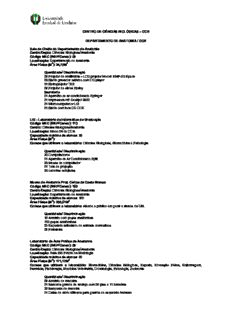
CENTRO DE CIÊNCIAS BIOLÓGICAS – CCB DEPARTAMENTO DE ANATOMIA / CCB Sala da

Bea Mine (Sweet Nothings Bake Shop 01)
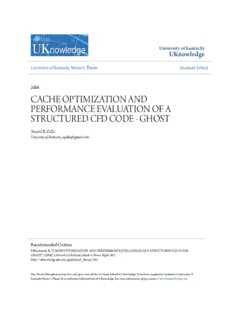
cache optimization and performance evaluation of a structured cfd code
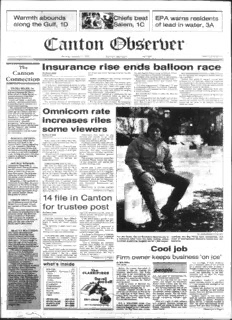
C anton (Extorter
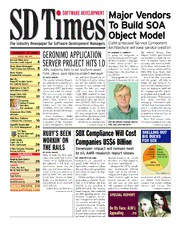
SD Times Issue 142
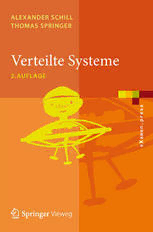
Verteilte Systeme: Grundlagen und Basistechnologien
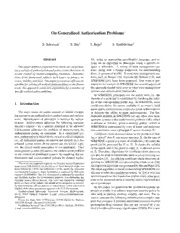
DTIC ADA449059: On Generalized Authorization Problems

CA--LIFORNIA INSTITUTE

Avertissements Agricoles - Grandes cultures - Centre - 1993 - 13

Grundlagenforschung zur Entwicklung von umweltfreundlichen Schlacken für das Elektro-Schlacke-Umschmelzverfahren
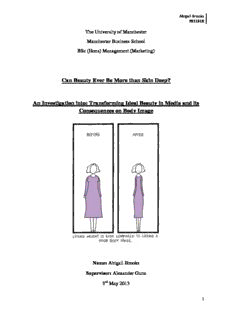
Can Beauty Ever Be More than Skin Deep?

by Pablo-Alejandro Quinones A dissertation submitted in partial fulfillment of the requirements for
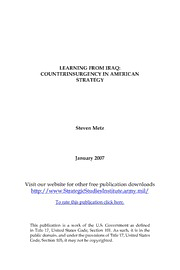
Learning from Iraq - Counterinsurgency in American Strategy (2006)
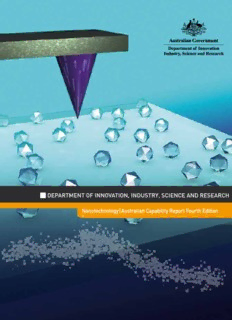
can be found here - Australian Nanotechnology Alliance
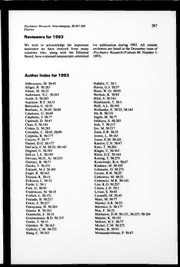
Psychiatry Research: Neuroimaging 1993: Vol 50 Index
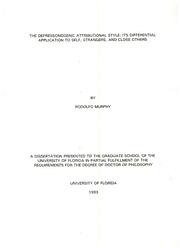
The depressonogenic attributional style : its differential application to self, strangers, and close others
